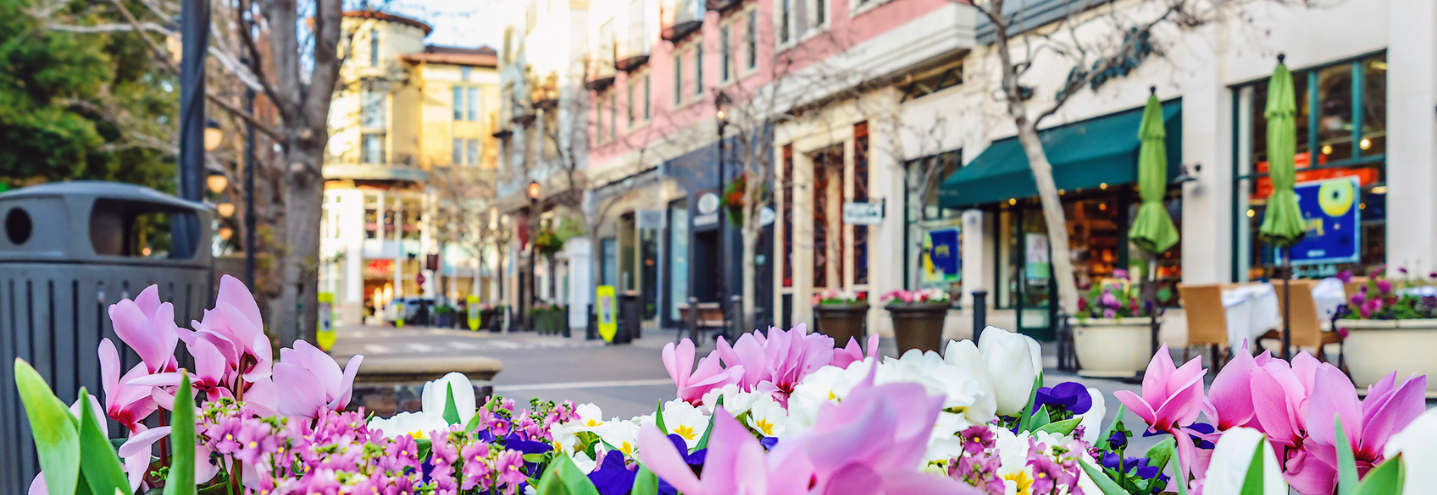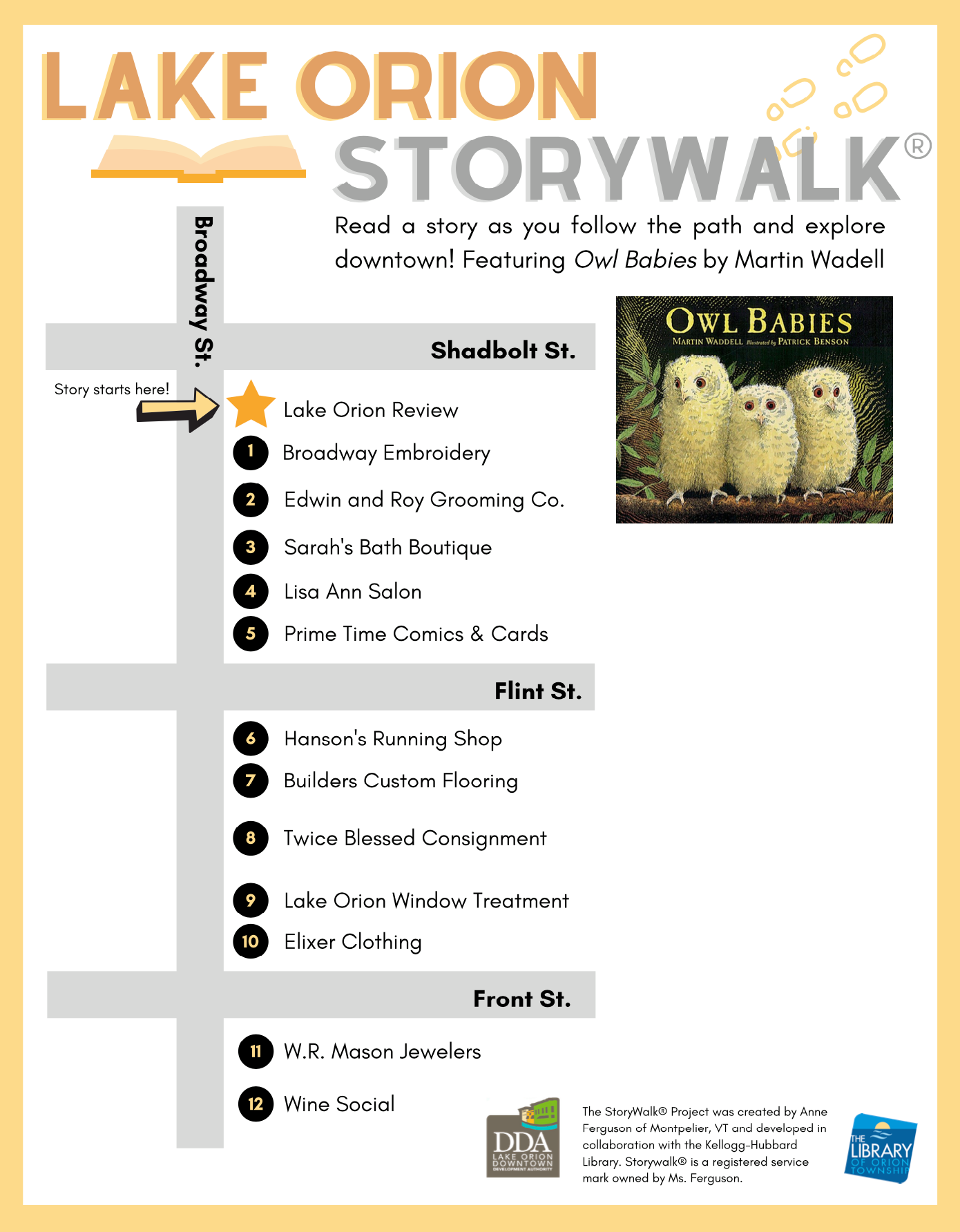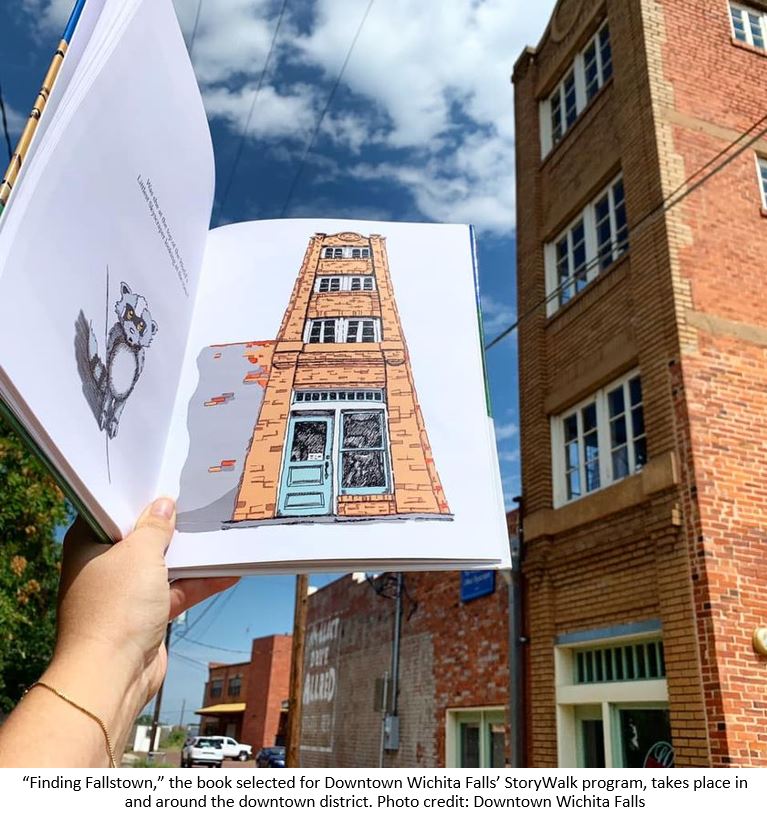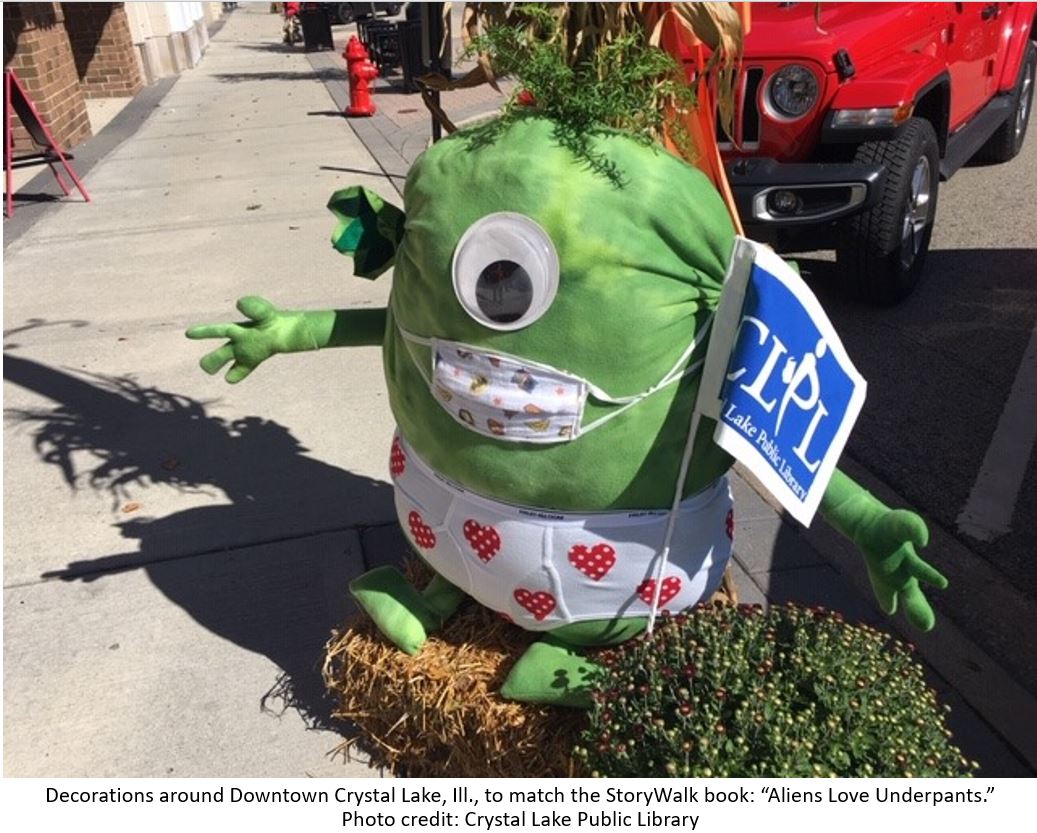Main Spotlight: Connecting, Innovating, and Sustaining a Healthy Main Street Movement
Key takeaways from six sessions at the 2025 Main Street Now Conference.

Since their creation, StoryWalks® have been leveraged by Main Street programs to create walking trails in commercial districts. By posting pages from books in storefront windows, families are encouraged to explore their local small businesses while piecing together the storybook’s plot. This family-friendly downtown activity has been trending since it was initially developed in 2007, but the pandemic has caused a surge of StoryWalks in Main Streets around the nation.
This popularity is no surprise, as the original StoryWalk was created to transform people’s relationships with both public spaces and public health. The idea was remarkably simple: select a book, deconstruct it, laminate the pages, and post those pages along a walking trail. Anne Ferguson, Chronic Disease Specialist at the Vermont Department of Health, brought this idea to life in 2007 in collaboration with Montpelier’s Kellogg-Hubbard Public Library and the Vermont Bicycle & Pedestrian Coalition. Since then, the popularity of these initiatives has only soared.
Interested in creating a StoryWalk in your downtown commercial district? Read on to learn more about installing a successful story walking trail.

The three key ingredients to a successful downtown StoryWalk are: a picture book, a walking trail, and a partnership. The first partnership of most successful Main Street StoryWalks is between a downtown development organization and their public library.
For example, the public library in Boone, North Carolina, and the Downtown Boone Development Association (DBDA) had a longstanding tradition of working together before starting a StoryWalk program. In 2012, a youth services librarian suggested the idea of a StoryWalk as something fun to do downtown around the holidays. The DBDA would identify businesses that wanted to participate, and the library would post pages of the stories in the business windows. The first page would be posted at the library, who would also create and provide walking maps orienting pedestrians to the businesses to explore along their walk. Since then, the DBDA and the library have worked on StoryWalks to celebrate the summer and holidays downtown.
Even if your public library is not in your downtown district, there is plenty of potential for a fruitful partnership. Take for instance the partnership between the Orion Township Public Library and the Lake Orion Downtown Development Authority (DDA) in Lake Orion, Michigan. The public library has been an active member of the DDA for over five years, even though it is not in the downtown business district. For example, the library owns a Book Bike that they take to concerts and other DDA events to promote the library downtown. Library Director Karen Knox sees the library’s partnership with the DDA as an essential way to ensure the library has a presence in downtown.
During the pandemic, the DDA and the library started brainstorming what they could do together without gathering large groups of people downtown. They hit upon the idea of a StoryWalk, and during the month of October, the library brought the children’s story Owl Babies by Martin Waddell to the windows of various downtown businesses.

While a typical downtown StoryWalk features books that have been purchased or donated, other Main Street organizations have worked with their libraries to display stories that highlight local culture.
In Texas, Downtown Wichita Falls teamed up with the public library for a downtown Storybook Stroll in September. This partnership chose to feature a book highlighting the local community, in this case "Finding Fallstown": a children’s book celebrating downtown Wichita Falls. This children’s book was written by the director of the public library, Jana Hausburg, in 2019, and published through a collaboration with the Wichita Falls Convention and Visitors Bureau.
Downtown Wichita Falls wrote in a press release: “The event was created to bring awareness and activity to the downtown district and to provide a free and family friendly activity to those in the community. This is a fun way to get out of the house and explore our own community and at the same time providing an activity that is easy to maintain social distancing and encourage sales at downtown merchants.”
To give a flavor of how this program looks in other communities, here a few other examples of Main Street organizations teaming up with public libraries to develop Storywalks.
Altavista, VA. This past summer, the Main Street Coordinator of Altavista On Track (VA), Kirsten Aherron, worked with the Campbell County Public Library system to find local businesses interested in participating in a book hunt program, in which businesses in both Altavista and neighboring town Brookneal would partner with their respective library branches to place pictures of books in their windows. “The idea is just to give kids and families something to do and get people to walk around town,” Aherron told a local reporter. Learn more.

Crystal Lake, Ill. In Crystal Lake, Illinois, Downtown Crystal Lake teamed up with the local library for a similar program. The Main Street scattered pages from the children’s book “Aliens Love Underpants” around the downtown district. The final business on the StoryWalk was Marvin’s Toy Store, where completed StoryWalkers could scan a QR code to be entered for a chance to win a $20 gift certificate to the toy store and their very own small plush alien. Learn more.
Bradford, PA. In Pennsylvania, the Bradford Area Chamber of Commerce teamed up with the Bradford Area Public Library over the summer to feature the book “My Grandmas Garden.” This children’s book was written by a local author Pat Drummond (Colley) and illustrated by her daughter Denise Drummond. The Bradford StoryWalk was set up as a scavenger hunt. “Begin your journey by finding each picture of the book at downtown local businesses,” challenged the Main Street program. “As you find each picture in your packet, you are required to write down where you found the pictures and continue your walk until you find each page of the book.” Families that completed the challenge were entered into a raffle for a $20 Chamber Gift Certificate. Learn more.
Emporia, KS. In Emporia, Kansas, the library and Emporia Main Street teamed up during October for a fall festival downtown StoryWalk, featuring pages from “We’re Going on a Pumpkin Hunt” by Mary Hogan Wilcox. “All are encouraged to enjoy acting out the action words in the story as they read and walk downtown,” according to the press release. Learn more.
The exact number of downtown StoryWalk partnerships remains unknown. A conservative estimate would put the number around 100, but the true measure is most likely much higher. Each initiative is a unique reflection of the community of the Main Street district and the partnerships created to bring children’s books to life downtown.
The StoryWalk is a flexible program that can and should be tailored to the unique needs of your community. Within the simple idea of combining reading and public space, a myriad of opportunities are available. You may wish to feature local authors, celebrate local holidays, or think of other ways to feature local culture. The easiest way to start it is to pick up the phone and call your librarian.
When you reach out to your local library to kick off this partnership, be open to brainstorming about what can be done in your community. This is not a program-in-a-box, but rather a flexible framework for forming and sustaining enduring partnerships between Main Street organizations and America’s nearly 10,000 public libraries.
Teaming up with your local library to bring stories to downtown businesses is a great way to build community, foster partnerships, and bring your members together to work collectively towards a common goal. Try it out in your community!